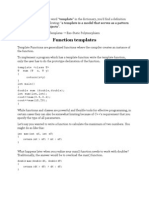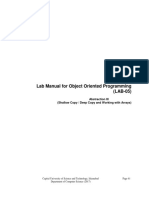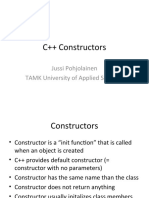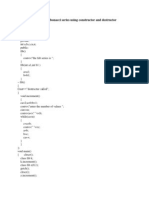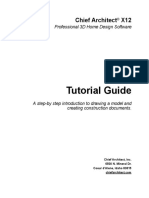0% found this document useful (0 votes)
6 views27 pagesLecture-2 (Deep Copy)
This lecture covers debugging in Visual Studio, the concepts of deep and shallow copy, and the use of templates in C++. It explains the importance of copy constructors for classes with pointer members, and provides examples of function and class templates for generic programming. Additionally, it includes class assignments and pre-lab tasks related to templated ADTs.
Uploaded by
m.shaffin.malik.599081Copyright
© © All Rights Reserved
We take content rights seriously. If you suspect this is your content, claim it here.
Available Formats
Download as PPTX, PDF, TXT or read online on Scribd
0% found this document useful (0 votes)
6 views27 pagesLecture-2 (Deep Copy)
This lecture covers debugging in Visual Studio, the concepts of deep and shallow copy, and the use of templates in C++. It explains the importance of copy constructors for classes with pointer members, and provides examples of function and class templates for generic programming. Additionally, it includes class assignments and pre-lab tasks related to templated ADTs.
Uploaded by
m.shaffin.malik.599081Copyright
© © All Rights Reserved
We take content rights seriously. If you suspect this is your content, claim it here.
Available Formats
Download as PPTX, PDF, TXT or read online on Scribd
/ 27










